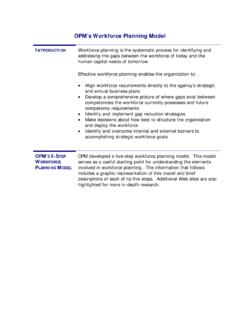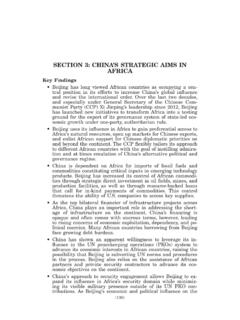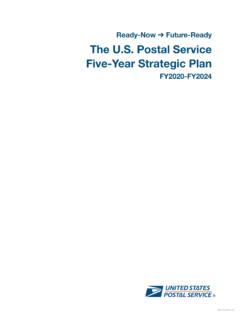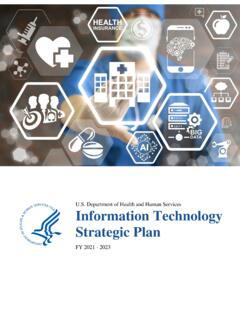Transcription of U.S. Strategic Framework for the Indo-Pacific
1 @J!!el"lJ!!'Y',','IJ8J?8 RIJ 000174 (U) Strategic Framework FOR THE Indo-Pacific (U) National Security Challenges (8;','IJF) How to maintain U. S. Strategic primacy in the Indo-Pacific region and promote a liberal economic order while preventing China from establishing new, illiberal spheres of influence, and cultivating areas of cooperation to promote regional peace and prosperity? (B;' ;'lOF) How to ensure North Korea does not threaten the United States and its allies, accounting for both the acute present danger and the potential for future changes in the level and type of the threat posed by North Korea? (B;';'16F) How to advance U. S. global economic leadership while promoting fair and reciprocal trade? (U) Enduring Vital Interests of the United States: (U) Protect the homeland; (U) Advance American prosperity; (U) Preserve peace through strength; and (U) Advance American influence.
2 : U) Top Interests of the United States in the Indo-Pacific ( ; t6fi) Defend the homeland and American ci tizens abroad '; ' B ( prevent the spread of nuclear weapons and the means to deliver ; them 8;';'IJF) Preserve U. S. economic, diplomatic, and mili tary ( access to the most populous region of the world and more than ; one-third of the global economy F) Enhance the credibili ty and effecti veness of our 8,' ,'I ( alliances; and NE) Maintain primacy in the region while protecting ' S ( . American core values and liberties at home (U) Assumptions: (U//~) security and prosperity depend on free and open access to the Indo-Pacific region, which will remain an engine of , regional, and global economic growth. (U//~) North Korea's nuclear missiles and its stated intention of subjugating South Korea pose a grave threat to the homeland and our allies.
3 And Senior Director for Asia, NSC NSC declassification review Oeclassified in Part by Assistant to the President for National Security Affairs 1/5/2021 Brien . IRobert C !" I' fi,.!"I'J!J ~ e:: '! l" J!J i!1 ' B -Classified By: MPottinger, DAP Derived From: NSC SCG Declassify On: 20421231 i R t lT8F8 ', ', r 1!1J!:9P;!J!: 2 Shifting regional power balances will continue to // T)U ( drive security competition across the Indo-Pacific , leading to , increased defense investment by many countries in the region . including India and Japan ) Proliferation, maritime security, terrorism, and ~ U/ ( unresolved territorial disputes will remain the primary . security concerns and sources of conflict ) Loss of preeminence in the Indo-Pacific would ~ U// ( . weaken our ability to achieve interests globally ) Strong alliances are key to deterring conflict ~ U// (.
4 And advancing our vital interests ) Strategic competition between the United States and ~ U// ( China will persist, owing to the divergent nature and goals of our political and economic systems. China will circumvent . international rules and norms to gain an advantage ) China aims to dissolve alliances and ~ U// ( partnerships in the region. China will exploit vacuums and . opportunities created by these diminished bonds ) A strong India, in cooperation with like-minded ~ U// ( . countries, would act as a counterbalance to China Chinese economic, diplomatic, and military influence // T)U ( will continue to increase in the near-term and challenge the ability to achieve its national interests in the Indo . pacific region , ) China seeks to dominate cutting-edge technologies ~ U// ( including artificial intelligence and bio-genetics, and harness them in the service of authoritarianism.
5 Chinese dominance in these technologies would pose profound challenges . to free societies , ) China's proliferation of its digital surveillance ~ U// ( information controls, and influence operations will damage efforts to promote our values and national interests in the Indo-Pacific region and, increasingly, in the Western . hemisphere and at home ) China will take increasingly assertive steps to ~ U// ( . compel unification with Taiwan -) Russia will remain a marginal player in the Indo ~ U// ( pacific region relative to the United States, China, and . India SECRET//NOFORN 3I!:CiZE 1; ; rQOE ORN 3 : U) Desired End states ( . 3) )'t&E) North Korea no longer poses a threat to the U. S ( homeland or our allies; the Korean Peninsula is free of . nuclear, chemical, cyber, and biological weapons ti!F) The Uni ted States maintains diploma tic, economic, and '; ';~( military preeminence in the fastest-growing region of the world; most nations in the Indo-Pacific view the United States as their preferred partner; economic strength and.
6 Influence increase throughout the region S))NE) Regional countries uphold the principles that have ( enabled and regional prosperity and stability, including sovereignty, freedom of navigation and overflight, standards of trade and investment, respect for individual rights and . rule of law, and transparency in military activities . Free markets are the mainstream of Asia, and the ~ ei,','fJJ? ( economy generates jobs and growth as a consequence of its . interaction with the Indo-Pacific region 3)';'iGE) Regional disputes are resolved lawfully and without ( . coercion F) Southeast Asia is bound more tightly together in ei,(,(i ( business, security, and civil society -including through a ) strengthened Association of Southeast Asian Nations (ASEAN and works closely with the United States and our allies and . key partners to uphold the principles identified above i!
7 F) Southeast Asia is capable of managing terrorist !';';~( . threats with minimal assistance from non-ASEAN states F) India' s preferred partner on security issues is the !';';~( United States. The two cooperate to preserve maritime security and counter Chinese influence in South and Southeast Asia and other regions of mutual concern. India maintains the . capacity to counter border provocations by China SJJNE) India remains preeminent in South Asia and takes the ( leading role in maintaining Indian Ocean security, increases , engagement with Southeast Asia, and expands its economic defense, and diplomatic cooperation with other allies and . partners in the region S;)NE) The United States and its partners on every continent ( are resistant to Chinese activities aimed at undermining their . sovereignty, including through covert or coercive influence (U) Lines of Effort: (U) Alliances & Partnerships (ei,','lJJ?
8 Objective: Emphasize our commitment to the region, highlighting a shared vision for a ~free and open Indo-Pacific ." fi! ~ eFe 813 8R13T;' ;'t SECRE 1; ; fQOE ORfQ 4 Actions: Invigorate technical assistance to friendly governments to promote rule of law and civil institutions while communicating the strings attached to China's "Belt and Road Initiative." (See: " Strateqic Framework for Counterinq China's Economic Aqgression.") Develop a robust public diplomacy capability, which can compete with China's information campaigns; puncture the narrative that Chinese regional domination is inevitable. ~8;' ;'IJJ?) Obj ecti ve: Strengthen the capabili ties and will of Japan, the Republic of Korea, and Australia to contribute to the end states of this strate Align our Indo-Pacific strategy with those of Australia, India, and Japan. Aim to create a quadrilateral security Framework with India, Japan, Australia, and the United States as the principal hubs.
9 Deepen trilateral cooperation with Japan and Australia. Encourage South Korea to play a larger role in regional security issues beyond the Korean peninsula. Empower Japan to become a regionally integrated, technologically advanced pillar of the Indo-Pacific security architecture. Assist in the modernization of Japan's Self Defense Forces. ~~;! ;!~JF) Obj ecti ve: Reinvigorate alliances wi th the Philippines and Thailand, to strengthen their role in upholding a rules-based regional order. Actions: Preserve and where possible expand foreign development assistance and defense engagement, including access, exercises and training, and interoperability. ~8""lijJ?) Obj ecti ve: Advance u. S. securi ty leadership in the region through expanded engagement with Indo-Pacific countries on non-traditional security challenges. Actions: Expand collaboration with Indo-Pacific countries on peacekeeping, humanitarian assistance/disaster response, and global health.
10 Share the burdens and fruits of research and development with allies and like-minded partners to retain our military edge. Encourage like-minded countries to play a greater role in addressing these challenges and in increasing burden-sharing. Share the benefits of our research and development with allies and like-minded parterns to retain our collective military edge. J!lT;' ;'IJ8J?8 RIJ .xt EiJ!lEJ J!:T;' ;'iGoE o1Z1G I J!:e 5 iGE) Obj ecti ve: Enable Taiwan to develop an effecti ve ';'; ( asymmetric defense strategy and capabilities that will help ensure its security, freedom from coercion, resilience, and . ability to engage China on its own terms U) India and South Asia ( Objective: Accelerate India' s rise and capacity to ) lq ';'; ( ; serve as a net provider of security and Major Defense Partner solidify an enduring Strategic partnership with India underpinned by a strong Indian military able to effectively collaborate with the United States and our partners in the.















